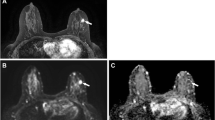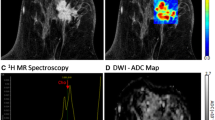Abstract.
Magnetic resonance imaging (MRI) of the breast brings the advantages of high resolution cross-sectional imaging to breast cancer diagnosis, treatment and research: improved cancer detection, staging, selection of therapy, evaluation of therapeutic response in vivo, detection of recurrence, and even the development of new therapies. Until now breast cancer treatment and research has been impeded by the limited means of evaluating the breast cancer in vivo: primarily clinical palpation and mammography of the breast tumor. A review of the initial studies shows that with the use of paramagnetic contrast agents, MRI has a sensitivity of 96 % for detecting breast cancers. MRI detects multicentric disease with a sensitivity of 98 %, superior to any other modality. The ability of MRI to detect recurrent local breast cancer in the conservatively treated breast is nearly 100 %. MRI is capable of monitoring tumor response to chemotherapy and actually guiding therapeutic interventions such as interstitial laser photocoagulation.
Similar content being viewed by others
Author information
Authors and Affiliations
Rights and permissions
About this article
Cite this article
Davis, P., McCarty Jr., K. Sensitivity of enhanced MRI for the detection of breast cancer: new, multicentric, residual, and recurrent. Eur Radiol 7 (Suppl 5), S289–S298 (1997). https://doi.org/10.1007/PL00006910
Issue Date:
DOI: https://doi.org/10.1007/PL00006910




